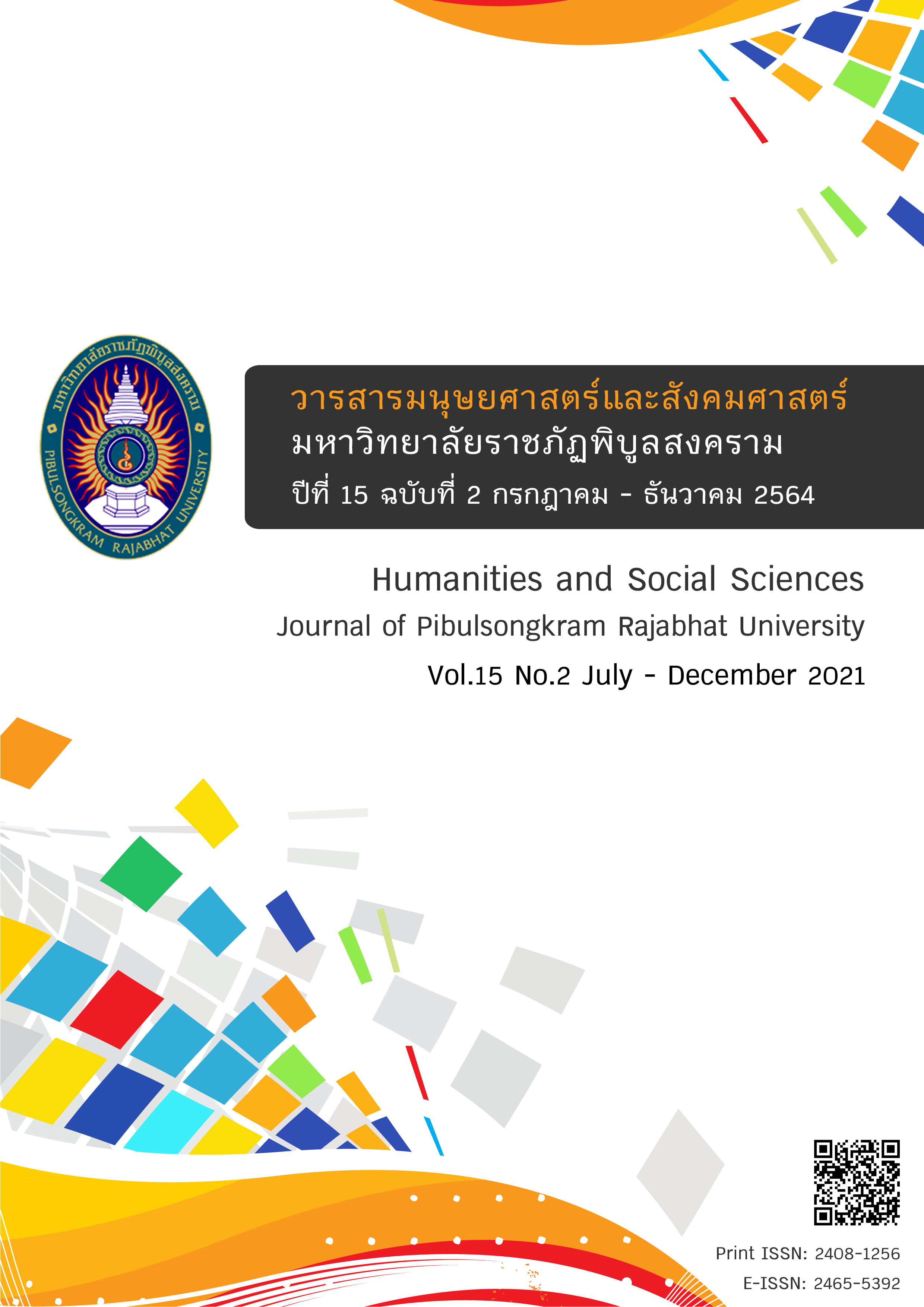Characteristics of Lifelong Learners for Creative Professional Make up Artists
DOI:
https://doi.org/10.14456/psruhss.2021.30Keywords:
Characteristics of Lifelong Learners, Creative Professional Makeup Artists, Lifelong LearningAbstract
The purposes of this research were to study characteristics of lifelong learners of creative professional makeup artists. The results of the study were as follows: The characteristics of lifelong learners in creative professional makeup artists were composed of 4 dimensions. 1) Behavioral dimension, consisted of 17 items. It referred to the actions, traits, or behaviors of creative make-up artist, which were mostly influenced by ones’ own attitudes. 2) Attitude dimension, consisted of 20 items. It referred to the positive views and beliefs towards oneself, other people, the environment, including learning. 3) Skill dimension, consisted of 5 items.
It referred to personal abilities derived from practice and learning of the lifelong learners until they had expertise, which enhanced their efficacy in lifelong learning, and 4) knowledge dimension, consisted of 3 items. It referred to information or content obtained from experiences or conceptualizing in various aspects holistically. It’s necessary, useful and valuable for living and pursuing success for the lifelong learners. These 4 dimension could be useful for educators to promote lifelong learning characteristics among creative professional makeup artists.
References
เกรียงศักดิ์ เจริญวงศ์ศักดิ์. (2543). การจัดการเครือข่าย: กลยุทธ์สำคัญสู่ความสำเร็จของการปฏิรูปการศึกษา. กรุงเทพฯ: ซัคเซส มีเดีย.
ไพฑูรย์ สินลารัตน์ และคณะ. (2550). คุณลักษณะของบุคคลที่พึงประสงค์ (4ร.). กรุงเทพฯ: โรงพิมพ์แห่งจุฬาลงกรณ์มหาวิทยาลัย.
สมใจ สืบเสาะ. (2556). การพัฒนารูปแบบการเรียนการสอนแบบสร้างสรรค์บนเว็บเพื่อส่งเสริมความคิดสร้างสรรค์สำหรับนักศึกษาระดับปริญญาบัณฑิต (วิทยานิพนธ์ดุษฎีบัณฑิต). กรุงเทพฯ: มหาวิทยาลัยเทคโนโลยีพระจอมเกล้าพระนครเหนือ.
สมพร หลิมเจริญ. (2552). การพัฒนาหลักสูตรเสริมเพื่อส่งเสริมความคิดสร้างสรรค์ สำหรับนักเรียนช่วงชั้นที่ 2 (วิทยานิพนธ์ดุษฎีบัณฑิต). กรุงเทพฯ: มหาวิทยาลัยศรีนครินทรวิโรฒ.
สำนักงานคณะกรรมการการศึกษาขั้นพื้นฐาน. (2547). รายงานการศึกษาคุณภาพที่เป็นมาตรฐานของเด็กไทยที่สังคมต้องการ. กรุงเทพฯ: โรงพิมพ์คุรุสภาลาดพร้าว.
Anastasia, A. (1958). Differential Psychology (3rd ed.). New York: The Macmillan Company.
Anderson, R. D., Devito, A., Dyrli, O. E., Kellogg, M., Kochendorfer, L., & Weigand, J. (1970). Developing Children’s Thinking through Science. Englewood Cliffs, NJ: Prentice Hall.
Candy, P. C., Crebert, R. G., & O’ Leary, J. (1994). Developing lifelong learners Through under graduate education. National Board of Employment, Education and Training Commissioned Report No. 28. Canberra: Australian Government Publishing Service.
Cropley, A. J. (1977). Lifelong education: A psychological analysis. Oxford: Pergamon.
Delors, J. (1996). Learning: The treasure within. Paris: UNESCO Publishing.
Florida, R. (2007). The Rise of the Creative Class. New York: Basic Books.
Garrison, K. C., & Magoon, R. (1972). Educational psychology. Ohio: Charles E. Morrill Publishing century-crofts.
Knapper, C. K., & Cropley, A. J. (2000). Lifelong learning in higher education (3rd ed.). London: Kogan Page.
Longworth, N. (2003). Lifelong Learning in Action : Transforming Education in the 21st Century. London: Kogan Page.
Medel-Añonuevo, C., Ohsako, T., & Mauch, W. (2001). Revisiting lifelong learning for the 21st century. Hamburg: UNESCO Institute for Education.
Skager, R., & Dave, R. H. (1977). Curriculum Evaluation for Lifelong Education. New York: Pergamon Press.
Torrance, E. P. (1962). Guiding Creative Talent. Englewood Cliffs, NJ: Prentice-Hall.
Trier, U. P. (1995). Cross-curricular competencies: rationale and strategy for developing a new indicator. In Peschar, J. L., Philips, G., Grisay, A., & Granheim, M. (Eds.), Measuring What Student Learn / Mesurer Les Rasultats Scolaires (bilingual). OECD, 97-108.
Downloads
Published
How to Cite
Issue
Section
License
Any articles or comments appearing in the Journal of Humanities and Social Sciences, Rajabhat Phibulsongkram University, are the intellectual property of the authors, and do not necessarily reflect the views of the editorial board. Published articles are copyrighted by the Journal of Humanities and Social Sciences, Rajabhat Phibulsongkram University.









